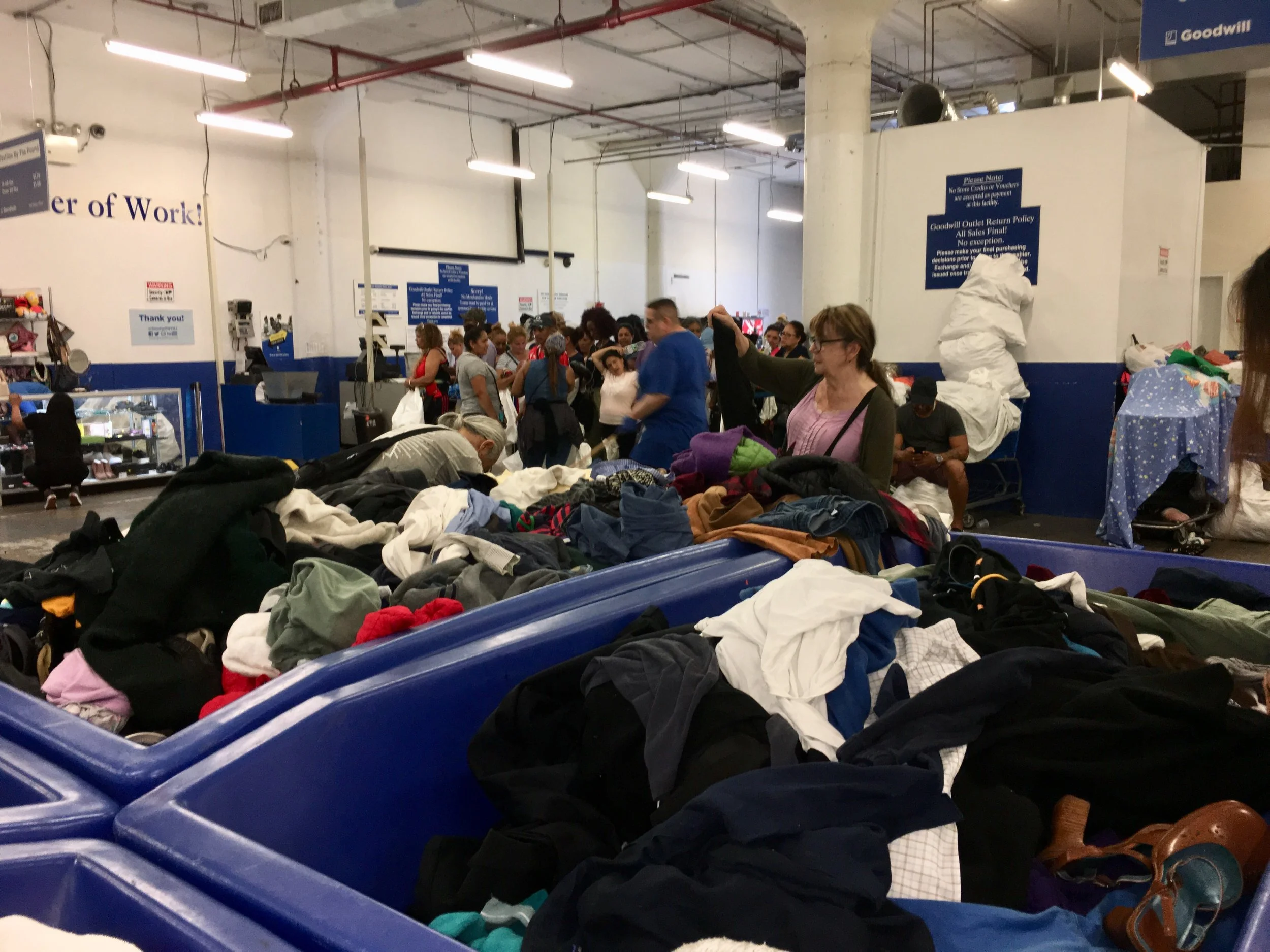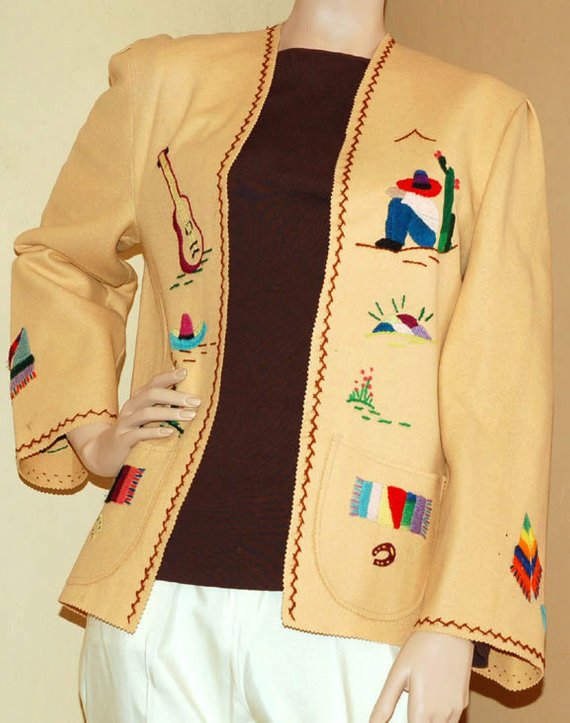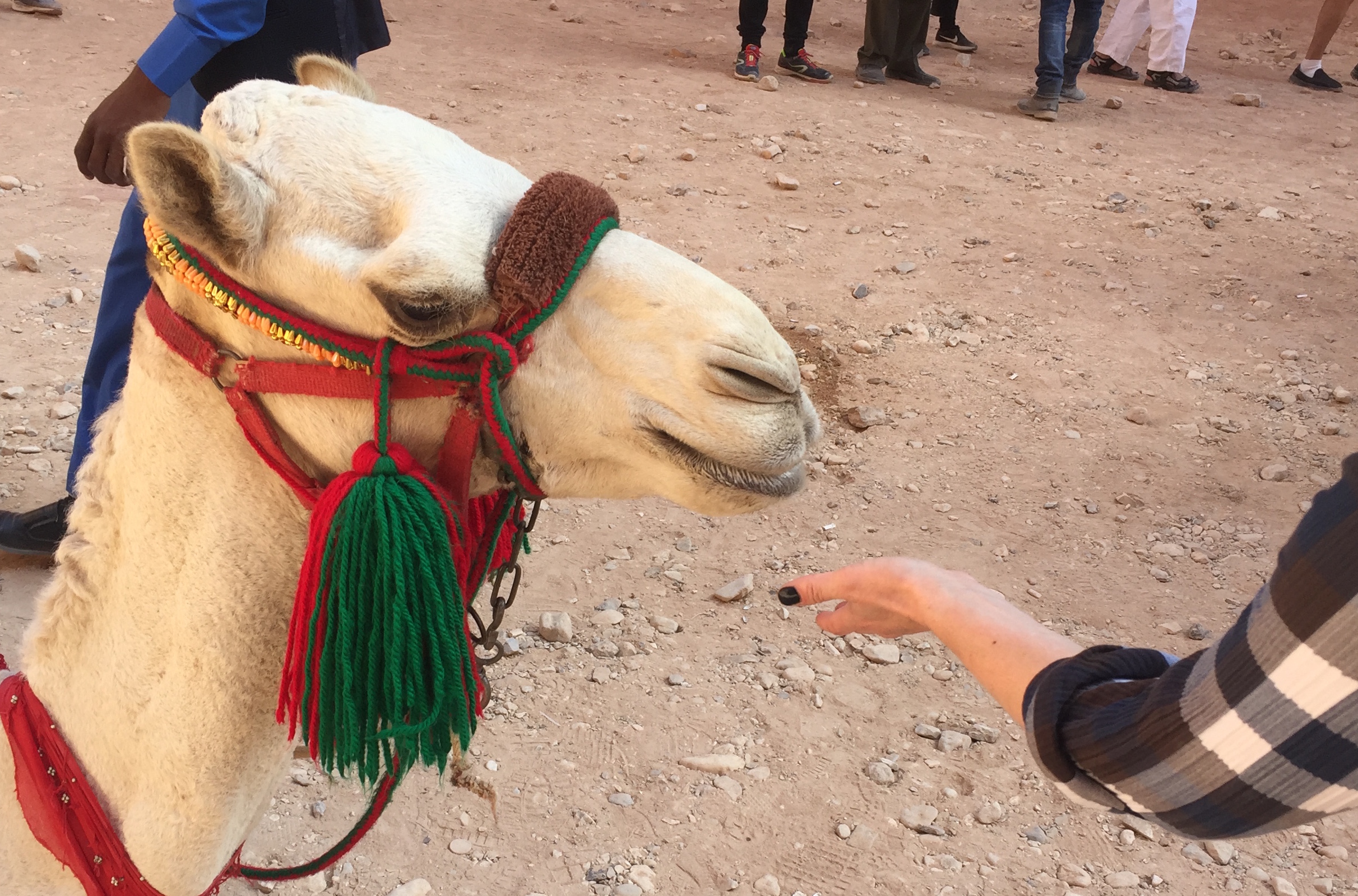I have to admit that my first quilt made from recycled clothing was not inspired by my otherwise fervent attempts to reduce my carbon footprint. Sure, I never take my tiny smart car grocery shopping, no matter how little gas it uses: I always walk, pulling behind me a little old-lady’s cart for heavy loads. I never use plastic bags, not even for produce. Don’t get me started on dryer sheets or fabric softeners... I use the same big bottle of perfume-free Castile soap for all my cleaning needs, including my own body. I have planted flowers and trees in my yard that benefit birds, bees and insects. I virtually never order takeout because of those pesky Styrofoam containers and I buy the majority of my clothing at thrift stores. If I buy in clothes in regular stores I make sure they are classy and last for years.
At my local Goodwill. In the background you can see the crowds waiting for the 4 o’ clock bins to be pushed in.
It must have been on one of my Goodwill hunts that I noticed several good-quality men’s shirts that were stained too badly to be worn but still good enough to be cut apart and turned into quilts.
The insanity of our country’s consumerism is best epitomized in the long lines in front of electronic stores whenever a new gadget is released. Sadly, this consumerism is mirrored by quilting groups whose members proudly compare their gigantic stacks of fabric. In line with our fast-fashion culture, the members are competing with their plastic bins and shelves brimming with unused fabric. With new designs popping up every few days allegedly beating the latest trend, consumption and waste is encouraged. We want more and more, newer and newer, oblivious of the impact fabric production has on the environment.
“Textile production is one of the most polluting industries, producing 1.2 billion tons of CO2 equivalent per year, which is more emissions than international flights and maritime shipping,” the journal Nature writes. “[L]arge proportions of clothing manufacturing occurs in China and India, countries which rely on coal-fuelled power plants, increasing the footprint of each garment. It has been stated that around 5% of total global emissions come from the fashion industry.”
The UN estimates that “[t]he fashion industry, including the production of all clothes which people wear, contributes to around 10% of global greenhouse gas emissions due to its long supply chains and energy intensive production.”
Via Trusted Clothes, a company that fights textile industry abuses
Even if we are committed to using the best natural cotton, we are faced with the following dilemmas, according to Textile Today: “60% of irrigation water in Central and Southern Asia is lost before reaching cotton fields because of poor infrastructure. 1.5% of world’s annual energy is consumed by industrial fertilizer production. Being a key consumer of fertilizer, cotton plays huge role in global climate change.”
The dyeing industry, with its toxic wastewater that leaks into streams and oceans poisoning and killing fish and marine life, is considered to be the most polluting of all the industries given its volume and composition.
And if this weren’t enough, each year Americans throw away 13 million tons of textiles, accounting for 9 percent of total non-recycled waste. 85% of textiles end up in landfills or are incinerated because their materials cannot not be reused. While thrift stores generally appreciate the donation of gently used clothes, they, too, have their limits. “Since the reality TV show ‘Tidying Up With Marie Kondo’ made its debut on Netflix in January, used-goods stores have been inundated with donations,” writes the Wall Street Journal. Some Goodwill stores have seen an increase in donations of 35%, but not everything can, in fact, be recycled. Much still ends up on landfills. “Since the show launched,” writes Fox Business, “many secondhand shops are receiving mass quantities of unsellable stuff — from moth-infested clothing to broken appliances and toys.”
Gearldine Westbrook, “Blocks And Strips,” Work-Clothes Quilt. Made in 1950. Photo courtesy of Souls Grown Deep. © 2018 Photo via Design Sponge
In the past, quilters have often used old fabric scraps to create unrivaled beauties. Out of necessity, the women of Gee’s Bend have for more than a century turned old work clothes into stunning quilts.
America Irby, “One Patch,” Tied, 1970, 91 x 78 inches, The Museum of Fine Arts Houston via Souls Grown Deep
Later, when some of the Gee’s Bend women worked at the Freedom Quilting Bee, which during its early years had a contract to manufacture dashikis, they incorporated leftover scraps of dashiki into their own quilts.
One could argue that the necessity of using old material enabled the women to invent modern abstraction long before modern painters like Joseph Albers, Piet Mondrian and Frank Stella came along and claimed hard-edge abstraction as their own invention.
Working with recycled fabric brings its own challenges—and opportunities. It has tested my integrity. How could I justify my allegiance with all things furry, scaly and feathered if I were to rely on fabric that contributes to environmental destruction? It is a challenge, of course, to create animals from prescribed patterns and a limited color palette. The fabric pieces I end up with are often smaller than fabric by the yard. This means I have to get creative when making my animals. I am lucky, though, because I prefer to use high-quality, 100% cotton, so men’s shirts are the perfect medium. For example, the blue and gray patterned hues so common in sea life lent themselves for a marine life quilt.
Sabine Heinlein, Fish quilt, 2018. To see the whole quilt and read more about it, click here. Photo: Rebecca Krasnik
One time I came across a gigantic pair of old long johns with flames on both sides. I was sure that no one in their right mind would wear this relic from the ‘80s but it made the perfect tail of a rooster. Crown, beak and feet I made from old silk ties. Believe me, it’s a regal beast.
Sabine Heinlein, Rooster Today, 2019, Photo: Rebecca Krasnik
Luckily, the textile community seems to be catching on to the opportunities of recycling and upcycling fabric. The Brooklyn company FABSCRAP picks up fabric and clothes from designers and factories and consolidates them in their warehouse in Queens. The fabric scraps are sorted by volunteers, who in return get to keep up to five pounds of fabric of their choice. Artists, crafters, quilters, students and teachers are invited to make an appointment to shop for scraps. Larger pieces of fabric are sold online through FABSCRAP’S partner Queen of Raw.
I really appreciate working with the challenges of reclaimed textiles and making a small difference for our environment and the animals with whom we share this world. I don’t think I would have made a chameleon baby quilt had it not been for the shirt scraps that I had left over from my fish quilt. Access to the newest and “coolest” fabrics can, in fact, hinder the creative process. First, it excludes those who can’t afford to buy new textiles they think they need to compete with the larger quilting community. And second, necessity is the mother of invention – and the aunt of creativity, challenging you to improvise and come up with ideas you would have not otherwise had.


















































